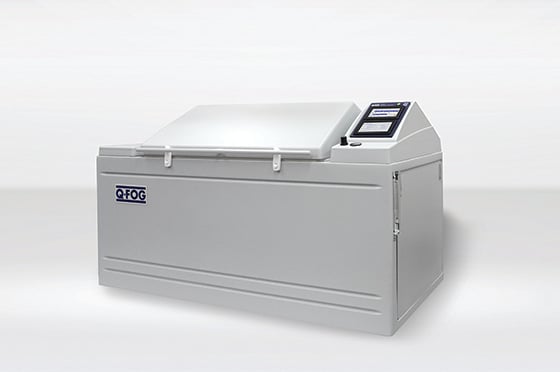
Copper-accelerated Acetic-Acid Salt Spray (CASS) testing is a common quality control corrosion test. This test combines a highly-corrosive, acidic salt solution and a high-temperature fog to accelerate the effects on corrosion-resistant materials like anodized aluminium and plated metals. The most common versions of this test are ISO 9227 CASS and ASTM B368, but many international corrosion tests call for similar conditions.
The most difficult part of running this test is meeting the collection requirements and the mass loss requirements at the same time. In most corrosion chambers, the high-temperature conditions cause significant evaporation of the solution. The result is that the collections are usually low in volume and high in concentration. Increasing the amount of solution in order to increase collections can result in over-corrosion of the mass loss coupons. As a result, many chambers can meet either the collections or the mass loss, but cannot meet both at the same time.
The Q-FOG CCT Cyclic Corrosion Tester has a unique ability to heat the chamber while simultaneously using the vapor generator. This increases the humidity of the chamber and reduces the effects of evaporation, without affecting the corrosion rate of the specimens in the chamber. With this function, Q-FOG CCT testers can meet both the mass loss and the collection requirements at the same time, making it fully compliant with the requirements of CASS testing. Additionally, due to the highly-corrosive nature of the CASS solution, Q-Lab requires the use of Extreme Environment Heaters to perform this test. These chamber heaters use a highly corrosion-resistant metal alloy to resist corrosion from CASS solution.

